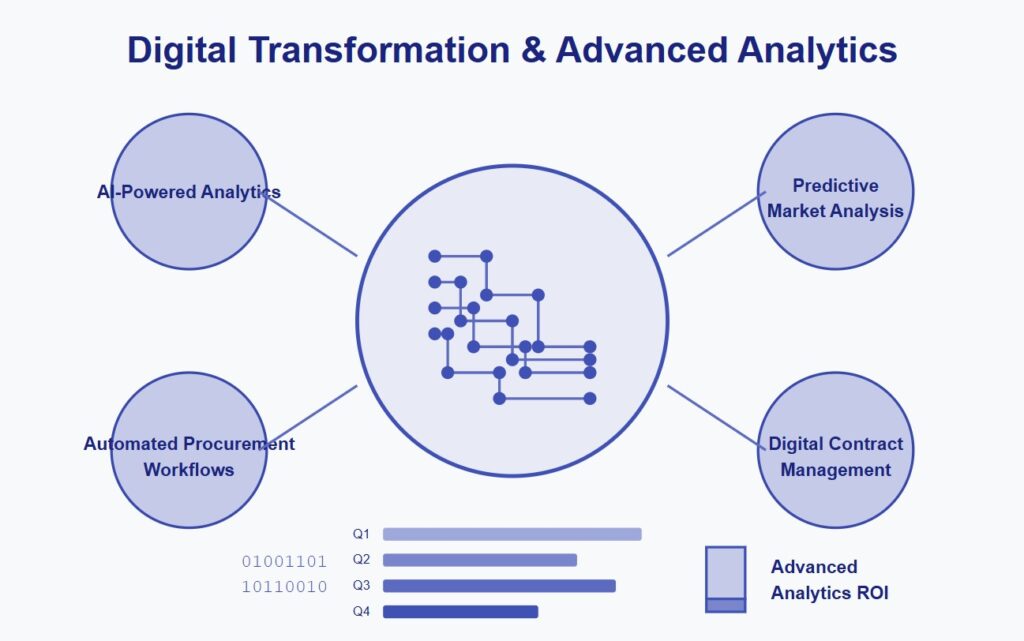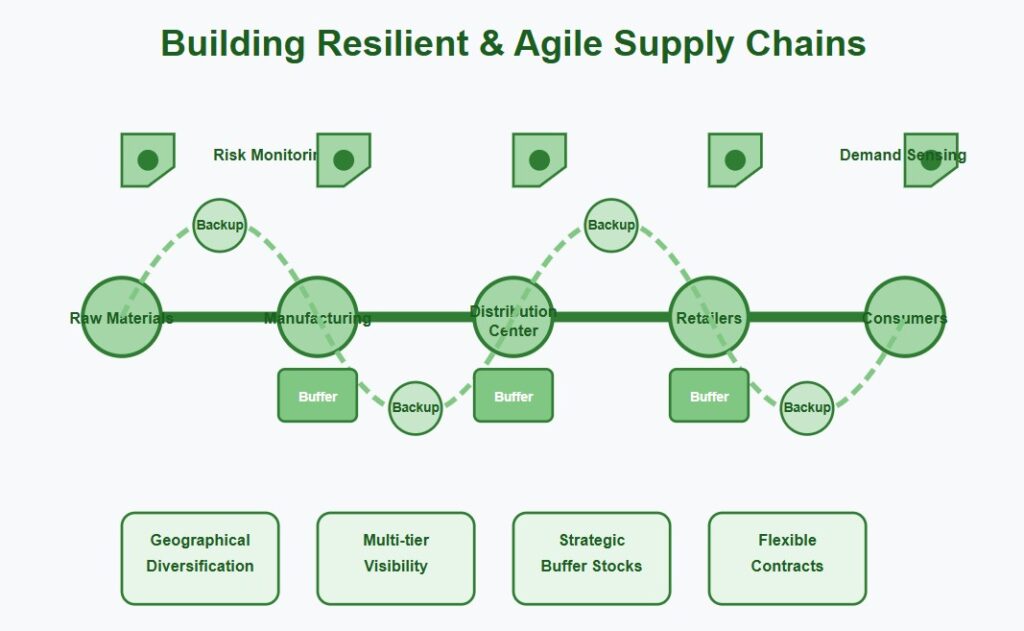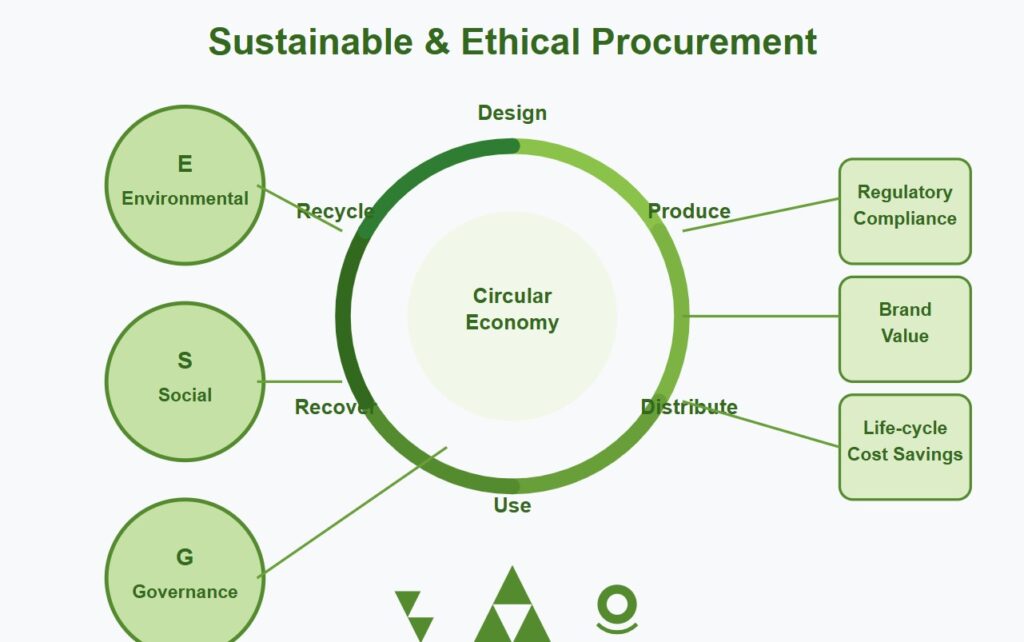
In today’s dynamic business landscape, procurement has evolved from a simple purchasing function to a strategic driver of organizational value. As we navigate through 2025, procurement teams face unprecedented challenges and opportunities to maximize return on investment (ROI). Digital transformation, supply chain volatility, sustainable practices, and strategic supplier relationships present both complex challenges and significant potential for value creation.
Embrace Digital Transformation and Advanced Analytics
The digital revolution continues to reshape procurement processes in 2025. Forward-thinking organizations are leveraging artificial intelligence, machine learning, and predictive analytics to drive procurement decisions and enhance ROI.
Advanced spend analysis tools now provide unprecedented visibility into organizational spending patterns, identifying opportunities for consolidation, negotiation, and cost reduction. These technologies can analyze vast amounts of procurement data to identify savings opportunities that would be impossible to detect manually.
Procurement teams should implement end-to-end digital procurement platforms that streamline processes from requisition to payment. These integrated solutions reduce manual work, minimize errors, and accelerate procurement cycles—ultimately lowering operational costs while improving service delivery.
AI-powered procurement assistants can now automate routine tasks such as purchase order creation, invoice matching, and supplier communications. By redirecting human resources toward strategic activities, procurement teams can focus on high-value initiatives like relationship management, innovation partnerships, and strategic sourcing.
Predictive analytics enables procurement professionals to anticipate market trends, supply risks, and price fluctuations. This foresight allows teams to make proactive decisions, securing favorable terms and avoiding costly disruptions.
Build Resilient and Agile Supply Chains

The turbulence of recent years has highlighted the critical importance of supply chain resilience. In 2025, maximizing procurement ROI requires balancing efficiency with flexibility and redundancy.
Leading organizations are developing sophisticated multi-tier supplier visibility systems that map dependencies throughout the supply network. This transparency allows procurement teams to identify potential vulnerabilities and develop contingency plans before disruptions occur.
Geographic diversification remains crucial for mitigating regional risks. Progressive procurement strategies now incorporate nearshoring and friendshoring approaches—balancing cost considerations with geopolitical stability and supply security.
Just-in-time inventory models are being supplemented with strategic buffer stocks for critical components and materials. While this approach requires additional investment, the protection against revenue losses from stockouts often delivers positive ROI.
Flexible contracts that adapt to changing circumstances—incorporating volume-based pricing tiers, market-indexed pricing mechanisms, and contingency clauses—provide procurement teams with the agility needed to navigate volatile markets while maintaining cost control.
Prioritize Sustainable and Ethical Procurement

Sustainability has moved beyond compliance and public relations to become a genuine driver of procurement ROI. In 2025, organizations that embed environmental and social governance (ESG) principles into their procurement practices are realizing tangible financial benefits.
Life-cycle costing approaches now consider not just purchase price but total ownership costs—including energy consumption, maintenance requirements, waste disposal, and potential regulatory penalties. This comprehensive view often reveals that sustainable options deliver better long-term ROI despite higher initial investments.
Circular economy initiatives—emphasizing product reuse, refurbishment, and recycling—are reducing material costs and waste disposal expenses. Procurement teams that collaborate with suppliers on closed-loop systems often discover innovative ways to extract additional value from existing resources.
The regulatory landscape continues to evolve rapidly, with governments implementing increasingly stringent environmental and labor standards. Proactive compliance through sustainable procurement practices helps organizations avoid costly fines, remediation expenses, and reputational damage.
Consumer and investor preferences have shifted decisively toward organizations with strong sustainability credentials. Procurement teams that can document and communicate responsible sourcing practices contribute directly to brand value and market share—key drivers of overall organizational ROI.
Foster Strategic Supplier Relationships
Transactional supplier management is giving way to strategic partnership models that unlock mutual value. In 2025, procurement teams are cultivating collaborative relationships focused on innovation, quality improvement, and shared success.
Early supplier involvement in product development accelerates innovation cycles while reducing costs. By engaging suppliers during the design phase, procurement teams can leverage external expertise to identify cost-effective materials, efficient manufacturing processes, and innovative features that enhance product value.
Joint continuous improvement programs with key suppliers yield ongoing efficiency gains and quality enhancements. These collaborative initiatives often deliver ROI far exceeding what either organization could achieve independently.
Supplier financing programs that leverage the buying organization’s credit rating to reduce supply chain capital costs are becoming increasingly sophisticated. These arrangements improve supplier financial stability while securing preferential pricing, creating win-win scenarios.
Performance-based contracts that align supplier compensation with measurable outcomes are replacing traditional fixed-price agreements. These arrangements ensure that procurement investments translate directly into desired results, maximizing ROI through enhanced accountability.
Invest in Procurement Talent and Expertise
As procurement becomes increasingly complex and strategic, the capabilities of the procurement team directly impact ROI potential. Leading organizations are investing heavily in procurement talent development and specialized expertise.
Category management specialists with deep market knowledge and industry expertise can identify opportunities that generalist buyers might miss. These professionals combine analytical skills with strategic thinking to develop category-specific approaches that maximize value.
Technical procurement skills like negotiation, contract management, and supplier relationship development directly impact financial outcomes. Ongoing training in these areas equips procurement teams to secure more favorable terms and resolve issues efficiently.
Cross-functional collaboration capabilities enable procurement professionals to align purchasing decisions with broader organizational objectives. By understanding the needs and constraints of different business units, procurement teams can deliver solutions that optimize overall value rather than simply minimizing purchase costs.
Leadership development within procurement functions ensures that strategic vision translates into consistent execution. Effective procurement leaders inspire their teams to pursue innovative approaches, champion change initiatives, and maintain focus on value creation.
Implement Strategic Cost Management
Beyond tactical cost-cutting, strategic cost management approaches deliver sustainable ROI improvements by addressing root causes of unnecessary expense.
Should-cost modeling techniques leverage data analytics to establish objective cost benchmarks for products and services. Armed with this information, procurement teams can conduct more effective negotiations and identify suppliers whose pricing reflects superior efficiency.
Design-to-value methodologies align product specifications with customer requirements, eliminating over-engineering and unnecessary features. By collaborating with engineering and marketing teams, procurement can ensure that spending decisions precisely target customer-valued attributes.
Strategic make-or-buy analyses consider the full spectrum of organizational capabilities and market conditions. By continuously reevaluating which activities to perform internally versus externally, organizations can optimize resource allocation and maximize returns.
Total cost of ownership models capture all expenses associated with purchasing decisions—including acquisition, operation, maintenance, and disposal costs. This comprehensive perspective often reveals that options with higher purchase prices deliver superior long-term ROI through reduced downstream expenses.
Conclusion
As we progress through 2025, procurement teams have unprecedented opportunities to drive organizational ROI. By embracing digital transformation, building resilient supply chains, prioritizing sustainability, fostering strategic supplier relationships, investing in talent, and implementing strategic cost management, procurement functions can deliver value far beyond traditional cost savings.
The most successful procurement organizations will combine these approaches into coherent strategies aligned with broader business objectives. By elevating procurement from a tactical purchasing function to a strategic value driver, forward-thinking organizations are positioning themselves for sustainable competitive advantage in an increasingly complex business environment.
The procurement function’s ability to balance competing priorities—efficiency versus resilience, standardization versus innovation, short-term results versus long-term value—will ultimately determine its contribution to organizational ROI. Those that navigate these tensions successfully will not only survive the challenges of 2025 but thrive amid the opportunities they present.
